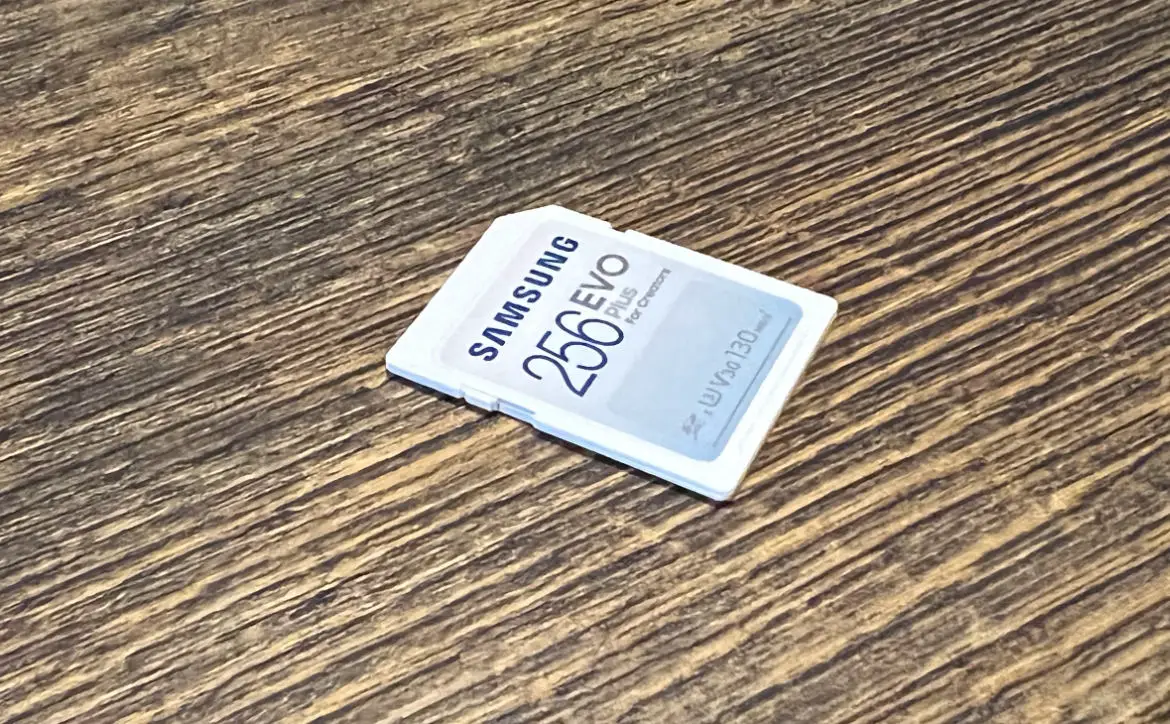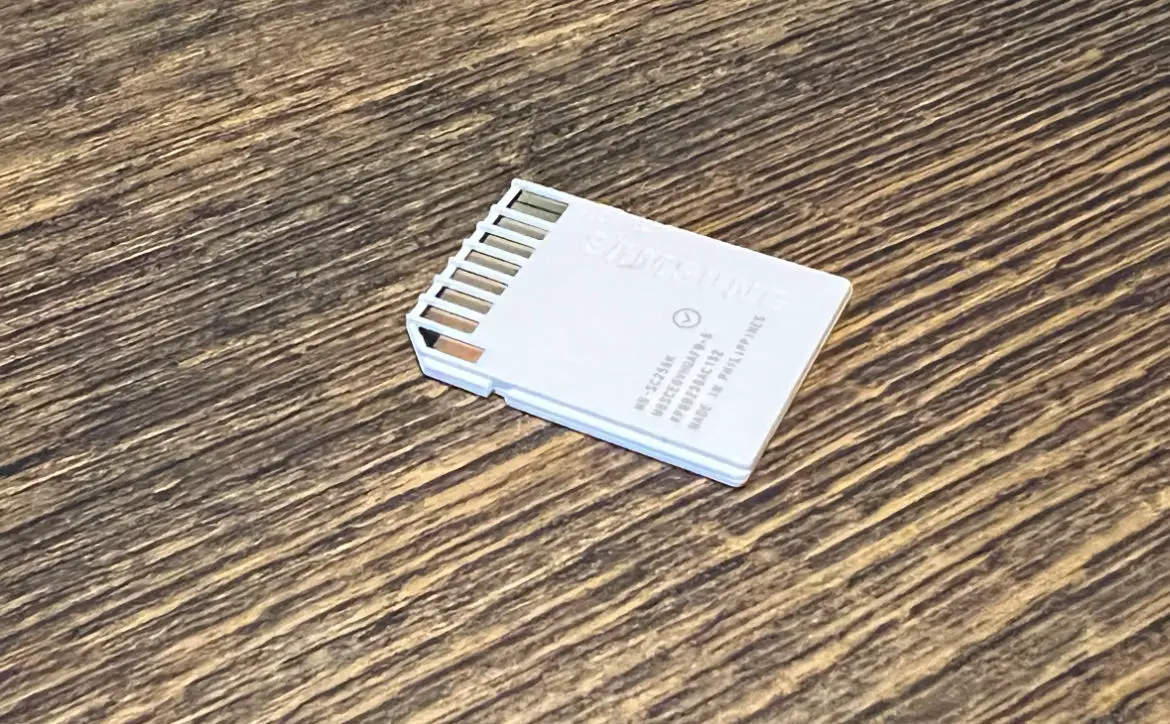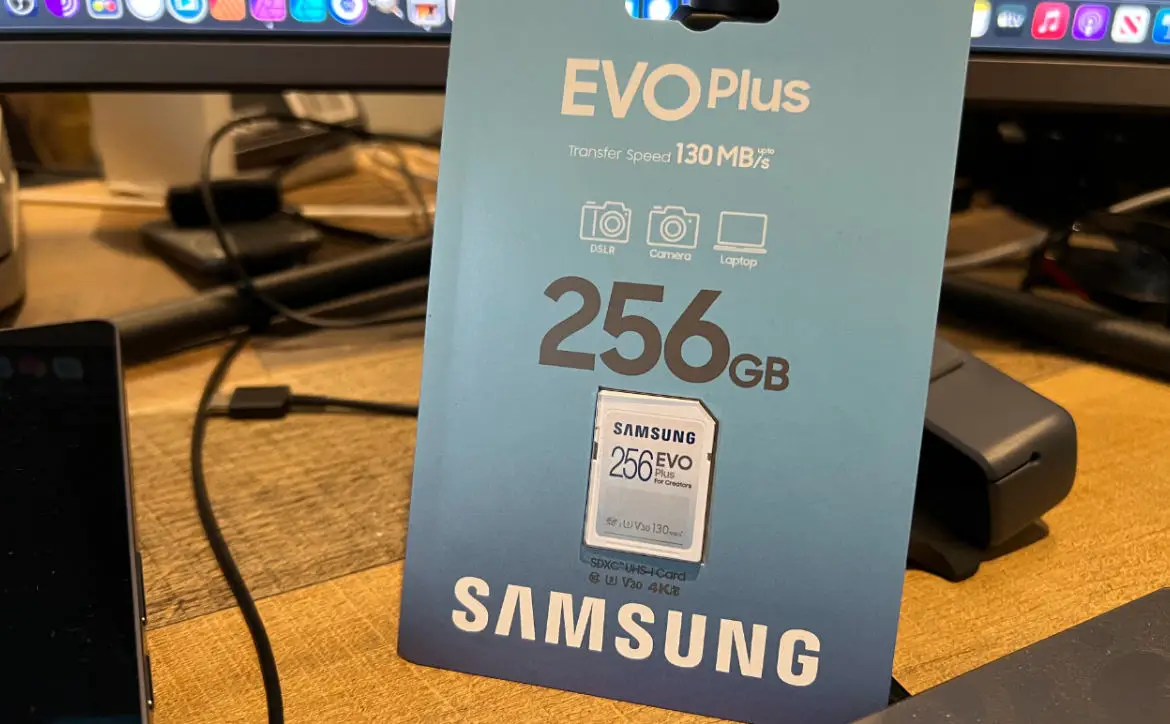
Most people do not get very excited over SD cards, and why should they? I mean, the majority of people do not need SD cards. Most people take photos and videos with their smartphones and leave devices requiring SD cards on the shelf. But that doesn’t mean the SD card is dead. Content creators, videographers, and photographers still need devices like the Samsung EVO Plus SDXC SD card.
Estimated reading time: 6 minutes
While the smartphone certainly has improved in video and photo taking, it’s still no comparison to a mirrorless camera with interchangeable lenses. Smartphones tout their cameras in terms of megapixels, but what they lack are outstanding optics. Lenses matter, and yes, smartphones have improved by leaps and bounds but not enough to make cameras or SD cards obsolete. Read on for our full Samsung EVO Plus SDXC review.
Read on for the full review of the Samsung EVO Plus SDXC.
Specifications
The Samsung EVO Plus SDXC has the following features and specifications:
- Storage Density:
- 32GB – Class 10, U1, V10
- 64GB – Class 10, U1, V10
- 128GB – Class 10, U3, V30
- 256GB – Class 10, U3, V30
- Interface: UHS-I
- Speed: Transfer speed up to 130MB/s
- Speed class: U3, V30, Class 10
- Warranty: Ten-year limited warranty
What’s In The Box
- Samsung EVO Plus SDXC

Design
SD card design has remained the same for a very long time, which makes sense since this is a format that is made to be interchangeable across devices. The size and shape of the Samsung EVO Plus SDXC are the same as every other SD card out there. The only difference here is the color. Most SD cards have black casings, but Samsung chose white. This is also not unique, there are other SD cards in this color, but most prefer black.
The lock button is on the side, just like every SD card, and on the back are the brass connectors that connect to your device for the card to work.
In addition, the Samsung EVO Plus SDXC comes with a host of features that make it worth having in your bag. The EVO Plus can take some abuse, and if you’re a working photographer, that’s good news. Here are a few of the features you can expect from this card:
- Water-proof
- Temperature-proof
- X-ray-proof
- Magnet-proof
- Shock-proof
- Drop-proof
- Wear-proof
- Store up to 44,439 4K photos on the 256GB version
Overall, there’s nothing spectacular in terms of looks and aesthetic design. But the added features do make the Samsung EVO Plus SDXC a lovely card to have in your bag.
Performance
The Samsung EVO Plus SDXC is rated at up to 130MB/s transfer speeds. Using the Lexar Multi-Card 2-in-1 USB 3.1 card reader, I ran three benchmark programs on my 2021 Mac mini. I used Blackmagic Disk Speed Test, ATTO Disk Benchmark, and DiskMark. Below are the results from each of these tests:
| ATTO Disk Seq Read | 126 MB/s |
| ATTO DISK Seq Write | 117 MB/s |
| DiskMark 2.2 Seq Read | 124 MB/s |
| DiskMark 2.2 Seq Write | 112 MB/s |
| Blackmagic Disk Speed Test Seq Read | 125 MB/s |
| Blackmagic Disk Speed Test Seq Write | 112 MB/s |
I also ran these same tests using the same benchmark programs using the built-in SD card reader on my Satechi hub, and the speeds were significantly slower. This is likely due to the hardware limitations of the SD card reader on the Satechi hub. I’m comfortable concluding that these numbers bring us close enough to the advertised “Up To” numbers.
For a quick and dirty test, I set my Sony A7iii to RAW and Continuous Shooting, and here’s what I got. I was able to capture 32 images in about 8-seconds before the camera stopped capturing photos. The write operation was completed in 28-seconds.
I have been using a Lexar 1066x SDXC in my Sony A7iii, and it works perfectly. The Lexar is just a tick faster than the Samsung EVO Plus SDXC, but that doesn’t make it a bad card. It still performed very well and within its advertised speeds.
It is important to note that the 32GB and 64GB versions of the Samsung EVO Plus SDXC have different specs. These are U1, V10 class cards and may not perform as well as the 128GB and 256GB (our version) due to the U3, V30 classification of the 128 and 256GB cards.
I do wish Samsung offered a 512GB option for this version of the EVO Plus line.
Overall, performance is going to depend on your hardware. If your camera can support the speeds of this SD card, then you should technically get the best performance out of it. If it doesn’t, then you’ll only see the performance your hardware supports.

Price/Value
Pricing starts at US$8.99 for the 32GB version and goes up to US$39.99 for the 256GB version. I’d say this is a very reasonably priced and affordable SD card. It’s slightly slower than the Lexar I have but much less expensive. It is worth it.
Wrap Up
The Samsung EVO Plus SDXC is a solid choice for your SD card needs. It has excellent read/write speeds, and the price tag is right on the money.
In some of our articles and especially in our reviews, you will find Amazon or other affiliate links. As Amazon Associates, we earn from qualifying purchases. Any other purchases you make through these links often result in a small amount being earned for the site and/or our writers. Techaeris often covers brand press releases. Doing this does not constitute an endorsement of any product or service by Techaeris. We provide the press release information for our audience to be informed and make their own decision on a purchase or not. Only our reviews are an endorsement or lack thereof. For more information, you can read our full disclaimer.










